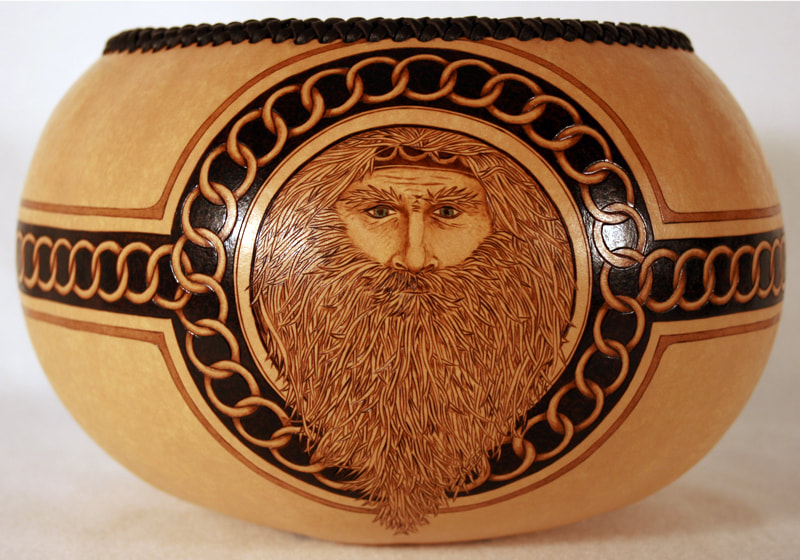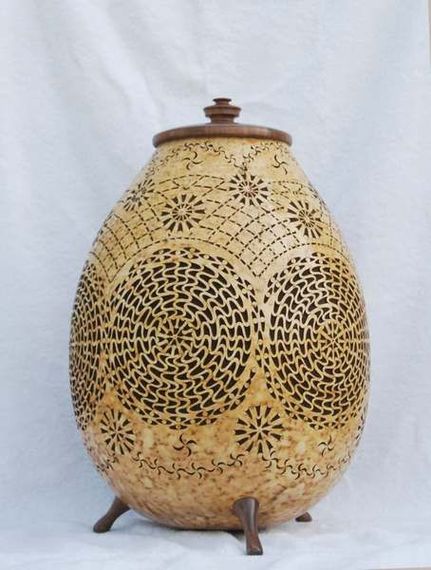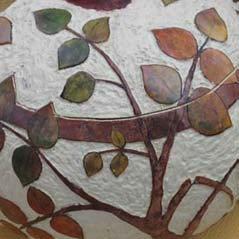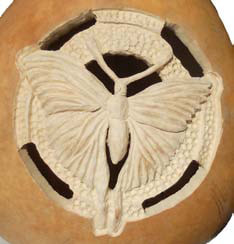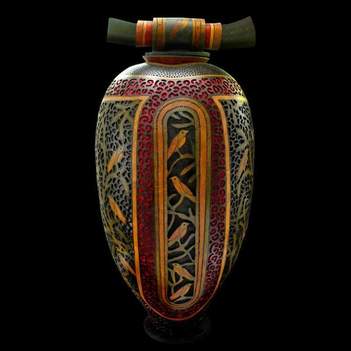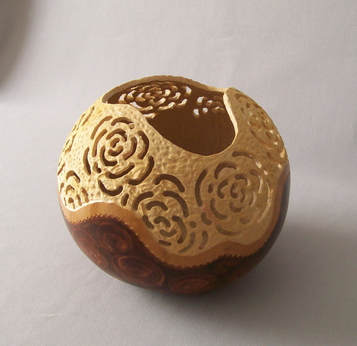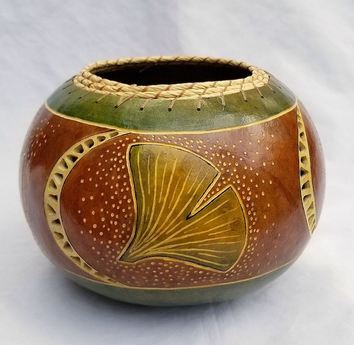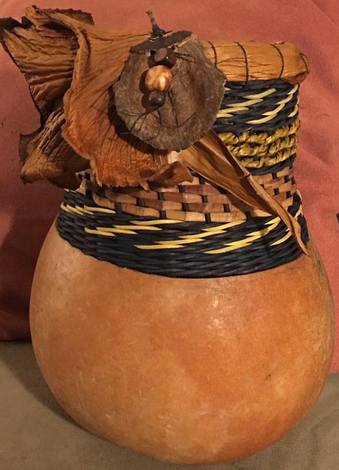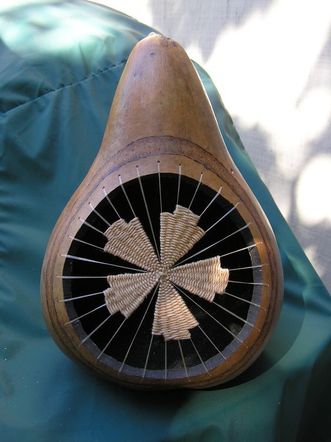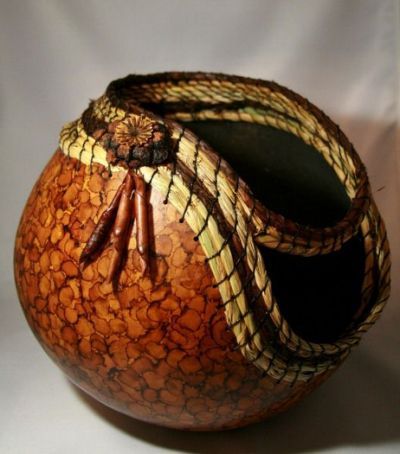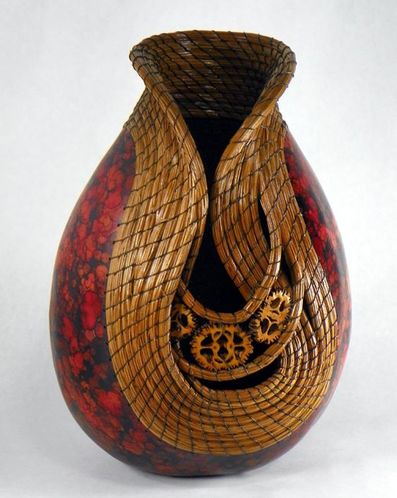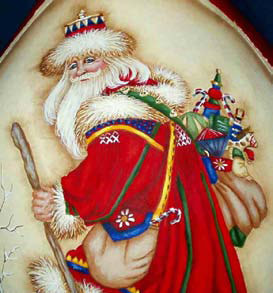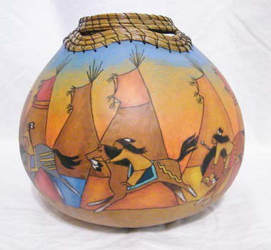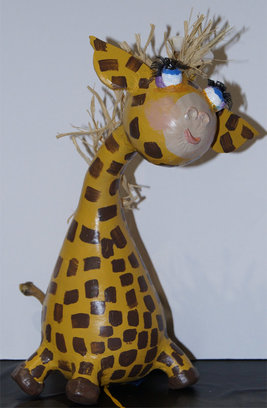Gourd Crafting Techniques
|
PYROGRAPHY
Description: Burning techniques consist of three basic styles; lines, shading and stippling. There isn’t a right or wrong way of doing pyrography, however as in any type of art, there are certain guidelines that create a more appealing end result. Judging Considerations
CHIP CARVING
Description: Chip carving is a style of wood carving in which hand tools (knives & gouges) typically used on wood are used to remove selected 'chips' of wood from the project in a single piece. Geometric patterns on gourds carved with hand gouges can range from a simple design all the way to an elaborate one. Judging Considerations
RELIEF (3D) CARVING
Description: Relief carving and 3D carving commonly are done with power tools and a variety of burs. Relief carving is executed in a manner that gives an illusion of depth. Backgrounds areas may be dimensionally carved, rendered as smooth or textured, with or without cutout areas. Stippling is an example of a textured background treatment. Judging Considerations For basic relief carvings:
FILIGREE/FRET WORK/CUT WORK
Description: Ornamental carving in which the design is formed by perforations. The sizes and shapes of the holes may vary, but the holes are spaced so that they create a pattern. Judging Considerations
|
|
WEAVING & TENERIFFE
Description: Weaving is an ancient craft that uses naturally grown materials and a few very simple tools to create baskets and other two and three dimensional artifacts. A weaving pattern can be a simple over one, under one weaving with one or more types of materials to more advanced patterns with twill, twining or other advanced techniques. Teneriffe is weaving with threads to create a pattern or random design. Judging Considerations Weaving
COILING
Description: Coiling is a basketry technique that involves the use of a core and a binder material for wrapping and/or stitching the core material to the gourd or a previous row of coiling. Core material could be from a variety of materials such as pine needles, philodendron sheaths, long grass, bark strips, cotton clothesline, paper rush or Danish Cord. Binder materials most commonly used are artificial sinew, waxed linen, embroidery floss and raffia.
Resources: Tools, Suppliers & Books PAINTING/COLORED PENCIL
Description: Painting with either acrylic paints or colored pencils are broken down on the same levels: novice, intermediate, and advance. Regardless of level, there should be no ridges within their painting, colors should complement each other … pleasant to the eye and evenly painted/penciled. The colored pencil piece should appear painted. Several levels of shading and highlighting (where appropriate) are indicative of higher painting skills. For example, the piece has various colors to give it depth and bring out highlighted areas, and colors have been blended into the adjoining colors. Judging Considerations
Resources: Tools, Suppliers & Books |
Download More Information
- Do You Want to Win a Blue Ribbon?
- Judging Guidelines by Technique
- Do You Want to Win a Blue Ribbon?
- Judging Guidelines by Technique
- For more information about entering your gourd art into Competitions at Shows, go to the AGS Judging Program pages on this web site
- To find Gourd Shows and when/where there are classes & competitions go to our Calendar page.

